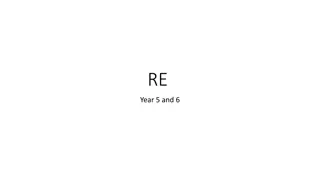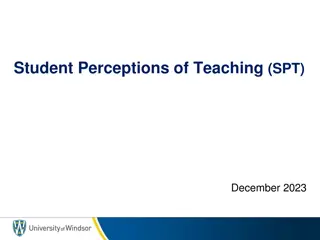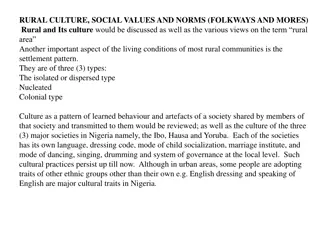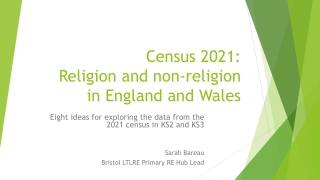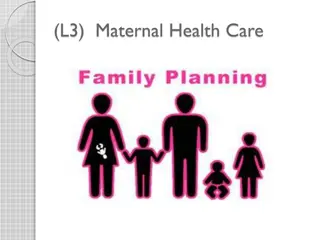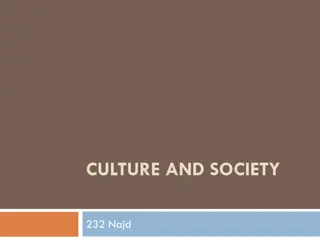Influence of Family Values and Christian Beliefs on Perceptions of Offensive Ads
This study explores how family values and Christian beliefs influence perceptions of offensive ads, particularly those featuring controversial topics like homosexuality. Research objectives include examining differences in perceived offensiveness between Christians and non-Christians, as well as the role of religious intensity and traditional family values in shaping these perceptions. Hypotheses suggest that Christians and individuals with higher religiosity may find certain ads more offensive.
Download Presentation
Please find below an Image/Link to download the presentation.
The content on the website is provided AS IS for your information and personal use only. It may not be sold, licensed, or shared on other websites without obtaining consent from the author. Download presentation by click this link. If you encounter any issues during the download, it is possible that the publisher has removed the file from their server.
Presentation Transcript
1 Influence of family values and Christian beliefs on perceptions of offensive ads Kara Chan, Hong Kong Baptist University Pui-san Chan, Hong Kong Baptist University Academy of Marketing Science conference July 11-14, 2023, Kent University
2 Introduction Advertisers use controversial ads to gain attention Using images of same-sex relations can be controversial, especially among people endorsing Christian beliefs Controversial ads --> offensive ads 3Ms of offensiveness: Matter, Manner, Media
3 Religion and offensive ads Kam et al (2004) studied Buddists, Christians, Moslems, and non-religious groups and found Moslems: ads of sex-related products, products related to social/political group, and health care more offensive Christians: ads of sex-related products, and additive products more offensive
4 Religion and homosexuality Most religions considered homosexuality ungodly A study among U students in 11 countries found Moslems: most offended by ads with homosexual images, ask for stricter regulations Christians and Hindus: regulations sufficient Church attendance, religious beliefs, and family ideology were predictors of attitude toward ad with homosexuality images
5 Research objectives RQ1: Any difference in perceived offensiveness of controversial ads between Christians and non-Christians? RQ2: Any difference in perceived offensiveness of ads with homosexuality images between Christians and non- Christians? RQ3: What is the relative importance of religious intensity and traditional family values in contributing to perceived offensiveness of controversial ads?
6 Research hypothesis H1: Christians find controversial ads more offensive than non-Christians H2: Christians find ads with homosexuality images more offensive than non-Christians H3: Persons with higher religiosity find ads with homosexuality images more offensive H4: Persons endorsed higher traditional family values find ads with homosexuality images more offensive
7 Research method Quota sampling: 100 Christians (including Catholics) and 100 non-Christians (a majority claimed no religion) Sampled 6 controversial ads from Google using search keywords Offensive advertising Created an ad for a fictitious dating apps with four versions (no human image, M-F, M-M, F-F images) Measure on religious intensity: 3-item, 5-point scale Family Values Scale: 18-item, 5-point scale Perceived offensiveness 1-item, 7-point scale
10 Sample profile (n=212) 109 Christians, 103 non-Christians 98% aged 18-29 Christians: 62% male; non-Christians: 49% male Christians scored lower in family role hierarchy (p<0.001) Christians scored lower in family relationships (p<0.001)
12 Perceived offensiveness of ads with homosexuality images Chart Title 6 5.5 5.32 5.31 5 4.5 4.08 4 3.76 3.75 3.42 3.5 3.17 2.95 3 2.5 2 1.5 1 control M-F F-F M-M Christians Non-Christians
13 H1 and H2 were supported Christians found Ad 1-6 more offensive than non-Christians Christians found Ad 7 with homosexuality images more offensive than non-Christians Non-Christians showed acceptance of ads with homosexuality image Differences in means were larger for Ad 7 than Ad 1-6
14 Perceived offensiveness and religious intensity General Linear Model Factors: religion; version of ad (homosexuality images) Co-variates: Religious intensity Results: in addition to religion and version, Religious intensity was a positive co-variate (F=4.885, p<0.05) Respondents who had higher religious intensity found the ads more offensive H3 was supported
15 Perceived offensiveness and religious intensity General Linear Model Factors: religion; version of ad (homosexuality images) Co-variates: Family values Results: in addition to religion and version, family values were positive co-variates (F=47.5, p<0.001) Respondents who endorsed higher traditional family values found the ads more offensive H4 was supported
16 Discussion Advertising manner more offensive than advertising matter (ads for a video game and a watch perceived more offensive than ads for condoms) Sex or violence themes/images may damage the brand if they advertised in Hong Kong (Chinese) society Seems receptive to NGO using controversial ads Christian respondents more offended by controversial ads and by ads with homosexuality images Religious intensity and family values contribute to perceived offensiveness
17 Marketing implications Size of Christians/Catholics community in Hong Kong 480,000 + 379,000 = 859,000 Brands should consider using controversial ads and ads with homosexuality images For non-religious group, traditional family values contributed to perceived offensiveness Test out controversial ads in medium that does not endorse traditional family values e.g. youth magazines
18 Limitations and future research Sample of a narrow range of ages More representative sample Survey respondents of other beliefs such as Buddists and Taoists Other explanatory variables such as Chinese identity or collectivism
19 Thank you !







